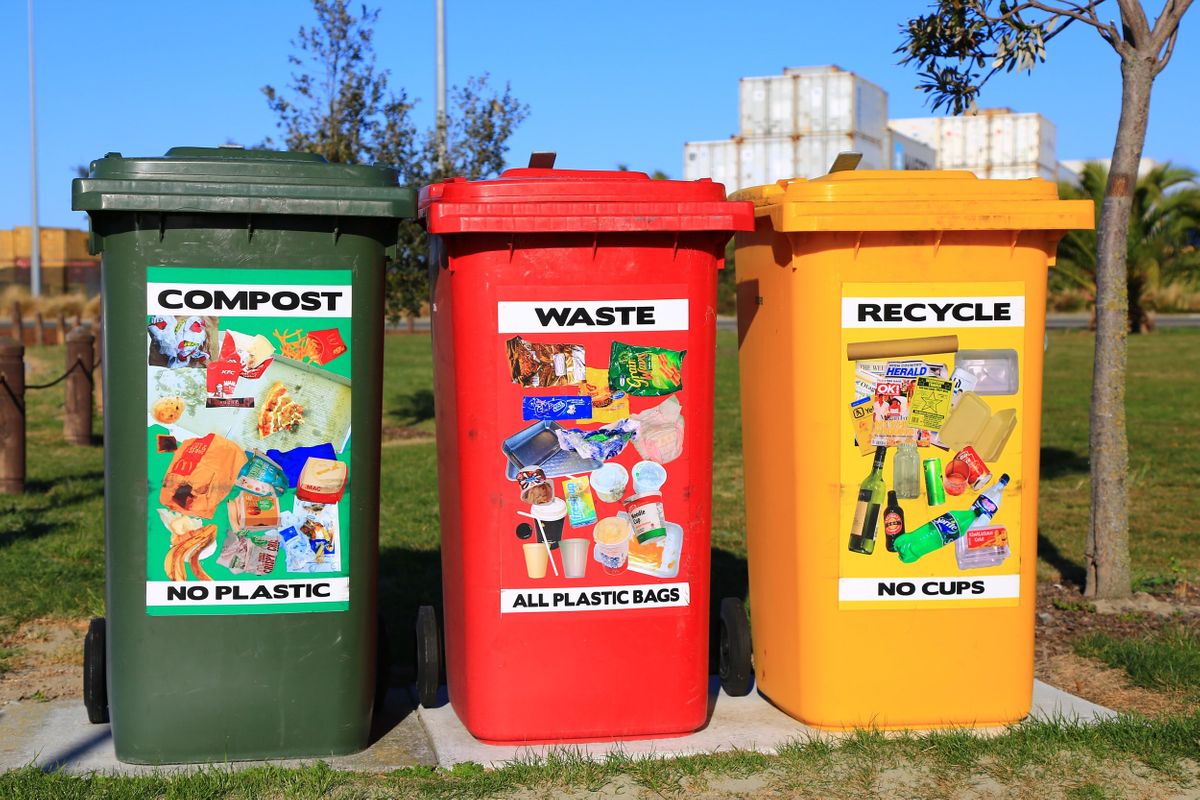Today’s article is straying a bit from energy, a topic we’ve covered in various ways over the past few months. Let’s take a moment to talk more about waste and recycling! Over the past few years, waste has become a hot topic in the sustainability field. There’s landfill waste, recycling, food waste, electronic waste (or e-waste), and many other kinds of materials entering our waste stream every day. Let’s start our waste journey by talking about recycling.
Recycling rates across the country vary significantly, depending on city/state programs, sorting capabilities, and other factors. For example, the recycling rate in the City of Chicago is an abysmal 9%, whereas the recycling rate in San Francisco is much higher at 80%. Some things that impact recycling rates include: 1) the global market for recyclable materials, 2) communication and confusion about what can and cannot be recycled, which leads to 3) a phenomenon called “wishcycling” and contaminated recycling bins.
For a long time, the United States would ship its recyclable materials overseas to China, who would accept, process, and reuse materials into new products. A few years ago, China stopped accepting the world’s recycled materials because it was coming in too contaminated. This drastically changed the market because the U.S. didn’t have a robust market set up to process recyclable materials as efficiently. Since China’s ban on importing the world’s recycling, states around the U.S. have tackled recycling differently. Check out this information from Waste Dive and see what your state is doing.
In addition to the change in the global recycling market, what can and cannot be recycled is often not well communicated to the general public, and can be different by city. People are often unclear about what types of plastics can be put in the recycling bin (check the number within the recycling symbol on a plastic container; 1’s and 2’s are generally recyclable, check local haulers to see whether other numbers can be), or whether something should be rinsed out before throwing it in the bin (in general, all food residue should be removed, and recycling companies prefer items to be dry). Add to that each haulers’ different rules, and it’s no wonder people are confused!
This confusion leads to a phenomenon sometimes called “wishcycling.” This happens when people aren’t sure whether something should be recycled, and just toss it in the recycling bin, hoping the hauler will take care of it. While the intention is good (“I want to recycle this item!”), it can often cause delays and problems at the recycling center. For example, flexible plastic (from plastic bags like trash bags and other types of packaging) can cause the machines at a recycling center to malfunction, stopping the process for sometimes hours at a time while they’re fixed. Check out what your city or individual hauler says about what can and cannot be recycled. If you’re not sure, resources like Recycle by City can help; or just toss it out.
Check out Laurel’s other blog posts!
- Storing Solar Power on a Large Utility-Scale
- Storing Solar Power
- Managing Humidity In Our Buildings
- DEMANDing Reductions
- Electricity in the Summer
- Demand vs. Consumption - Electricity is Complicated!
- Better Indoor Air Quality Means Happier (and Healthier) Occupants
- Who Decides the Utilities’ Rates?
- What is a Regulated vs. Deregulated Utility?
- Incentives for Solar and Renewables
- On-Site Solar vs. Community Solar - What Should You Do?
- Energy Benchmarking Is Becoming Mainstream
- The Cost of Water is Increasing…Now What?
- Gift-Giving For The Energy and Sustainability-Minded
- Water Reuse is Water Conservation!
- Tracking and Reducing Water Use in Your Building
- Teachers as Energy Conservation Champions in Schools
- Plug Loads and Commercial Office Tenants
- Communicating Energy Conservation With Residential Tenants
- Water, Waste, and Cleaning Of Buildings In A Post-COVID World
- Energy Management In Buildings In A Post-COVID World

